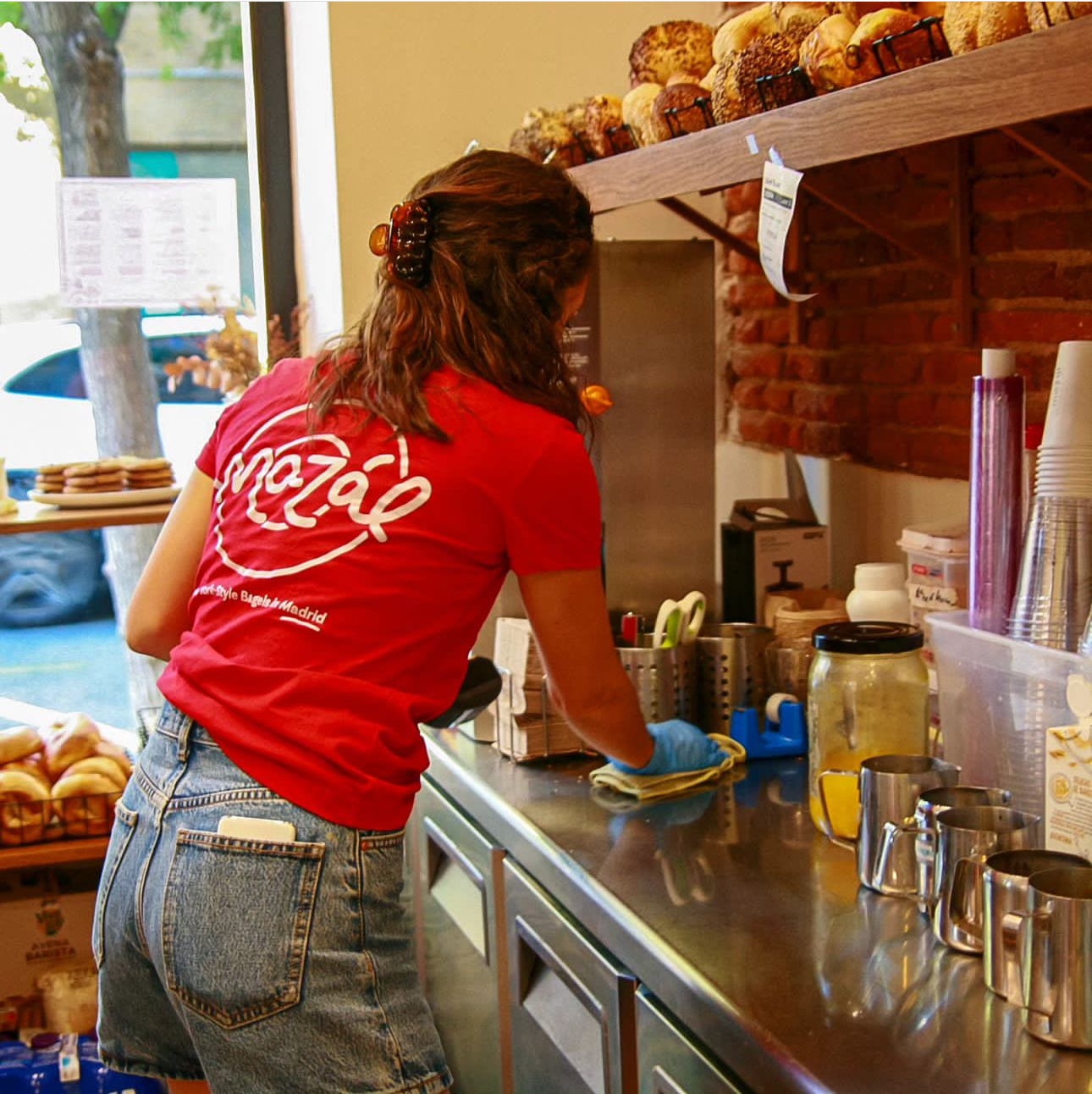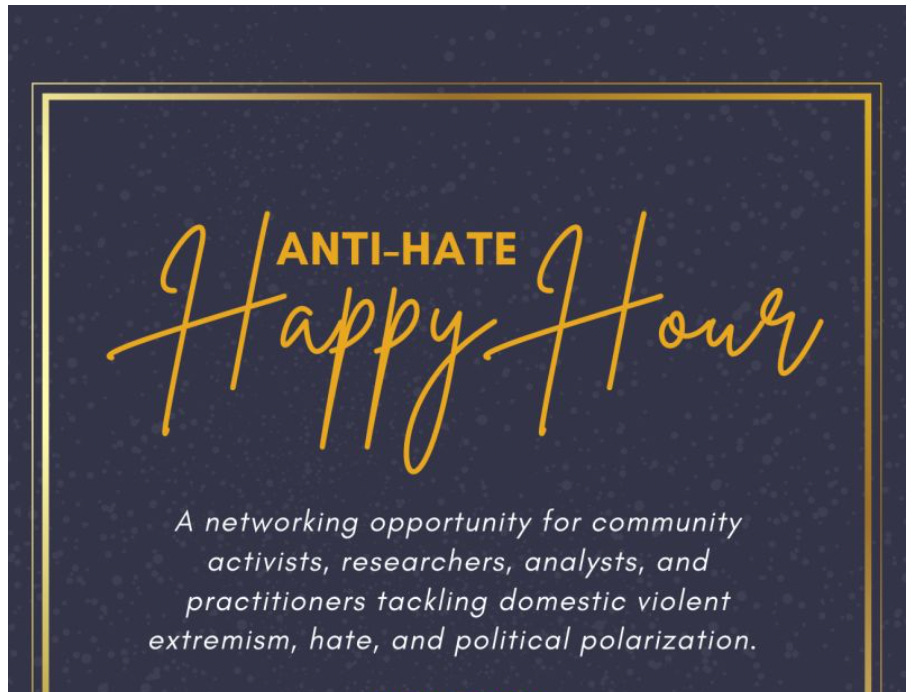The Narrative of American Immigrants has Changed. Disinformation Happy Hour. Learning to Love Your Art.
It's hard for me to grasp how far the story of immigration I grew up with has evolved. Disinformation is distorting the narrative of our nation and poking holes in the fabric of our democracy.

Growing up as a child of Nigerian parents in the suburbs of Dallas, Texas, I noticed an undeniable thread among my peers. My friends whose parents had recently immigrated from overseas were different. They may have been Mexican, Vietnamese, Egyptian, Korean, Haitian, Nigerian, or from any other country, but they all had something to prove. They had a story to live up to. Their parents had walked miles, escaped cruel dictators, crossed seas, worked nights, and endured numerous hardships just to reach the land of opportunity. My father mandated what so many other immigrant parents believed in their own ways: "Any child born in America who did not succeed had sinned against God."
That was the immigrant story I knew and grew up with—a story of people who took heroic measures, worked their asses off, and demanded that their children not squander the opportunities they had dreamed of. But today, that story seems to have all but dissipated from the current immigration discourse. Part of this shift is due to how news is told, where journalists often feel pressured to repeat, rather than correct, the narrative. It can feel hostile at times when you challenge. Another factor is that people, even within the media, don't fully understand or know the entire immigrant story in America. It takes work when you don’t come from that experience. There's also a lack of time to tell these stories in depth, compounded by the lies being spread. What a conundrum this country is in.
Once upon a time, I worked in immigration services at the State Department. I reviewed visas for people who wanted to visit, immigrate, or obtain the nebulous investor visa—a quasi-immigration status that allowed them to visit for five-year periods.
I recall one day reviewing a business plan for one of these investor visas when I looked up and was surprised to see another dark-skinned woman standing across from me. As a U.S. diplomat working in a Western European country, it was rare to see a dark-skinned woman applying for an investor visa at my window. But this woman had a solid plan and had invested thousands to launch her dream business in America. I proudly approved her visa, knowing I was giving her the chance to pursue something in my country that would likely have been much harder to achieve where she was. She was one of many immigrant entrepreneurs whose visas I approved.
Just last year, as a U.S. diplomat overseas, I approved visas for people wanting to start businesses as diverse as doggy daycares in Florida, tattoo shops in New York City, and specialty food markets across the country. These immigrants weren’t just starting businesses; they were investing thousands into the U.S. economy and employing Americans. Yet despite these real contributions, the stories of these entrepreneurs have been overshadowed in the last three election cycles by rhetoric painting immigrants as criminals or or dog-and-cat-eating, plague-carrying, minority job stealers. And truly there has been a struggle to balance the story.
And it is crucial to balance this story because as much as immigration has been a drain in resources, immigrants have also had an undeniably profound impact on job creation and the U.S. economy. Earlier this month, researchers from the the American Immigration Council released a report that found immigrants or their children founded 46 percent of Fortune 500 companies, including major firms like Amazon and Apple. These companies collectively employ 15.5 million people globally. Immigrants contributed over $500 billion in taxes and held $1.3 trillion in spending power in 2021, fueling federal revenue and consumer demand. In 2023, immigrants made up about 18 percent of all U.S. workers, playing key roles in industries like healthcare. Looking ahead, government officials predict that immigration will boost the U.S. GDP by $8.9 trillion or 2.4 percent from 2024 to 2034.
But immigration isn’t just about numbers—it’s about people. The blend of cultures, languages, and perspectives makes America rich and competitive in ways that other nations simply aren’t.
I’m not saying that I was always happy to approve visas or that I never questioned whether an American could fill the role an immigrant was coming to the country to do. There were moments of doubt. One case that stuck with me was an applicant who could barely read, seeking a visa to work in a poultry factory. I questioned the necessity—was it really worth it? Surely, I thought, there were Americans who could take those jobs. But after discussing it with my supervisor and doing some research, I came to understand the harsh reality: these jobs were dangerous and difficult, making them critical but hard to fill, especially when unemployment was low. Companies like the poultry factory had demonstrated a critical need for immigrant labor, highlighting the delicate balance of price, demand, and supply that allows people to affordably eat chicken. In such cases, immigration was seen as a win for both business and people seeking better options than the ones they had. These immigrants weren’t simply taking jobs Americans wanted—they were filling essential roles that kept industries, like food production, affordable and efficient.

But make no mistake—immigration isn’t just about people coming here. Americans are going abroad too. They like to call themselves “expats,” but they are also immigrants. All around the world, Americans seek opportunities to work and expand their businesses in international markets. Some ventures create jobs, like a young woman I met who started selling bagels in Madrid. Others can unintentionally harm local economies, such as TOMS Shoes’ “buy one, give one” model. While well-intentioned, their donations of shoes to developing countries were criticized for harming local shoemakers who couldn’t compete with free products. In tech, startups today can’t be taken seriously unless they’re planning for global expansion, making it clear that international markets are crucial to long-term success. Our economy is complicated, and the strategic—and sometimes ethically questionable—movement of people and businesses across borders has made the U.S. one of the strongest economies in the world. That’s a significant part of the immigration narrative in America that seems lost.
Yes, large influxes of immigrants have strained resources in some communities, requiring governments to step in and strike a balance. And like any population, immigrants include both law-abiding and law-breaking individuals, just as native-born Americans do. But some of these stories are outliers, while others miss the fuller context of the immigration story.
For many immigrants, entering a country and needing settlement support is the beginning, not the end, of their journey. Yet it’s difficult to fit the nuanced story of someone who enters the country, gets help settling, and then builds a business that supports the economy into a headline. Even when these stories are told, they don’t often generate the same clickbait appeal as false claims about immigrants eating pets.
And that’s the real shame—America’s immigration story has been hijacked. It’s not a tale of creating scarcity; it’s a story of creating opportunity and building one of the wealthiest nations in the world. From its earliest days, America has been shaped by people who immigrated here in search of opportunity. Whether it was the Pilgrims or today’s Haitians, controversy has always been part of the story. But it’s only part of it. To tell the full story, those in charge of the narrative need to zoom out, educate themselves, and take the time—because somewhere along the way, the thread has been lost.
Disinformation and Anti-Extremism Happy Hour
I recently when to a disinformation and anti-extremism happy hour. It doesn’t sound very “happy,” does it? But that’s the kind of happy hour you can find yourself at in a place like Washington, D.C. Though—after a few drinks, people can make light of even the darkest situations. For those who don’t know (and I didn’t initially), the disinformation field is in a nebulous place. Some view it as anti-hate, anti-extremism work, while others see it as pro-democracy, supporting institutions like the press. The Department of Homeland Security, however, seems to be approaching this issue it from the angle of combating political violence and antiterrorism—essentially tackling the issue after things have already gone off the rails.
Practitioners I spoke with generally agree that by the time political violence occurs, disinformation has already done its damage. So why focus so much energy on that end of the spectrum? The most obvious reason is that truth itself has become political. Government officials now embrace disinformation as a means to gain attention—like J.D. Vance's story about Haitians eating pets. Practitioners can no longer start by addressing disinformation directly, because even government officials can’t agree on what constitutes a true story.
When I worked at the State Department, we focused a lot on disinformation—specifically, how other governments lie to their populations or others to influence them. It often felt hypocritical, calling out these regimes while our own government wrestled with its own truth-telling issues. It’s complicated because when there’s no shared understanding of truth, people start to feel gaslit. You feel gaslit by the government, and because the media often gets information and confirmation from the government, you feel gaslit by the media as well.
When trust in these institutions erodes—and democracy relies on institutional trust—you begin to see the erosion of democracy itself. While political violence might seem like the most severe consequence of disinformation, the one we’re not addressing enough is the loss of trust in our democratic institutions. That erosion could eventually result in the collapse of democracy itself.
What I am Reading- Big Magic
Well, this newsletter has been a bit heavy, but now it’s time to lighten things up. I recently picked up Big Magic: Creative Living Beyond Fear by Elizabeth Gilbert, and I really enjoyed it. Ironically, she also wrote Eat, Pray, Love, a book I really disliked. Big Magic is all about tapping into your creativity and what that looks like for her, along with her critiques on how some people take themselves too seriously. She shares her thoughts on living a creative life, and I loved her perspective.
What really stood out to me was how to love your art again. One key takeaway was the idea of not trying to make money off your art, but focusing on loving it regardless of the outcome. I’ve been reflecting a lot on that—on not forcing my writing, which is my art, to be profitable, but treating it as something sacred that I love. I might make money from it, I might not, and being okay with either outcome.
So if this newsletter ever feels like it has a therapeutic tone, that’s because it is. It’s a space for me to dissect the narratives, experiences, and ideas that plague my mind. I don’t charge for it, but it’s always affirming when people subscribe.
Subscribe and Share
I hope you found this newsletter helpful and engaging. Please share with any friends or family you think would be interested and feel free to buy me a coffee by subscribing if you got some use out of it.
Follow me on Instagram too!




